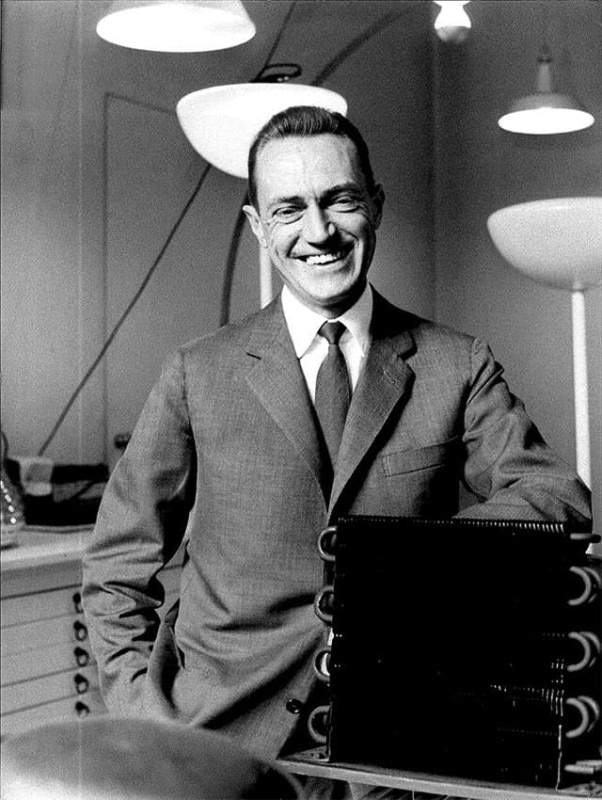Pier Giacomo Castiglioni (1913-1968) was a kaleidoscopic figure whose legacy mirrors much of Milanese design in the 20th century. He was exceptional, not only for the quantity but also for the quality and variety of his works. But he was also typical of his time as the central decades of the last century saw a fortunate convergence of cultural and economic capital that made Milan into a hub for “integral” designers. Like many of his contemporaries, Castiglioni hailed from a middle-class family; his father, Giannino (1884-1971), was one of the best-known sculptors in Lombardy, Italy.
Giannino’s famous Edicola Bernocchi at the Cimitero Monumentale (1936), with its iconic truncated cone roof showcasing a crowded via crucis of over 100 figures, is a notable example of his work. All three of Giannino’s sons, Livio, Pier Giacomo, and Achille, graduated in architecture from the Politecnico di Milano: the eldest, Livio, graduated in 1936, Pier Giacomo in 1937, and the youngest Achille in 1944. The brothers’ careers were closely intertwined. The first two opened their studio in the late 1930s, which Achille joined after completing his studies, while Livio broke away from the studio in 1953. After Pier Giacomo’s untimely passing, it was Achille who continued their shared legacy.
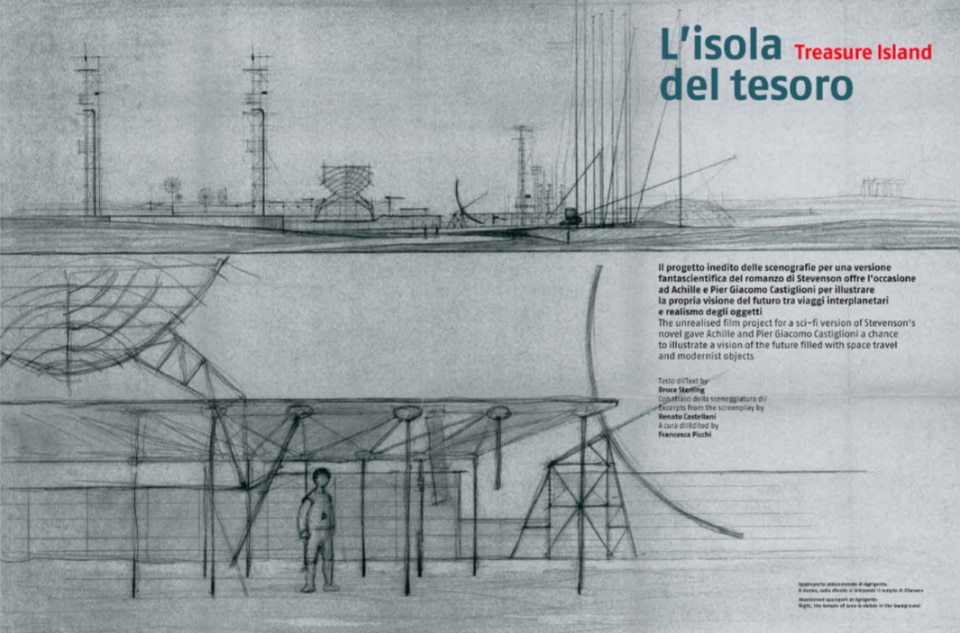
Alongside illustrious figures of his generation, including Ignazio Gardella (1905-1999), Luigi Caccia Dominioni (1913-2016), and Vico Magistretti (1920-2006), Castiglioni played a significant role in establishing and advancing the institutions and customs that shaped the discourse and practice of architecture and design in Milan. In 1945, he was a founding member of the MSA (Movement for Architectural Studies), which provided critical reflection and elaborate visions for the city during the hectic era of reconstruction. A decade later, in 1956, he played a crucial role in establishing the A.D.I. – Association for Industrial Design, which has since become a reference institution for Italian design. Castiglioni also worked with the Milan Triennale in various capacities, such as a member of the executive board for the 13th Triennale in 1964, the historic edition dedicated to leisure. Additionally, he collaborated with the Commissione edilizia del comune di Milano (the Building Commission of the City of Milan), the Council of the Consiglio dell’Ordine degli Architetti della Lombardia (the Order of Architects of Lombardy), and the Politecnico di Milano, where he taught life drawing.
Castiglioni’s diverse talents are evident in his varied accomplishments, which he achieved both individually and in collaboration with one or both of his brothers, depending on the era. Two of his most significant architectural works, though different in program and location, are based on the same approach: the expansion of the Palazzo della Permanente in Via Turati (1952-1953) and the Church of S. Gabriele Arcangelo in Mater Dei on Via Termopili (1956-1959), located in the heart of the working-class neighborhoods north of Piazzale Loreto. Both projects embrace a modern, rationalist-inspired language that emphasizes rigor and substantial sobriety, differentiating them from other contemporary Milanese architecture. Notably, the church’s elevation facing the street features a genuinely innovative solution; instead of a monumental façade, it’s a non-façade, a “void” of giant order that invites the faithful inside.
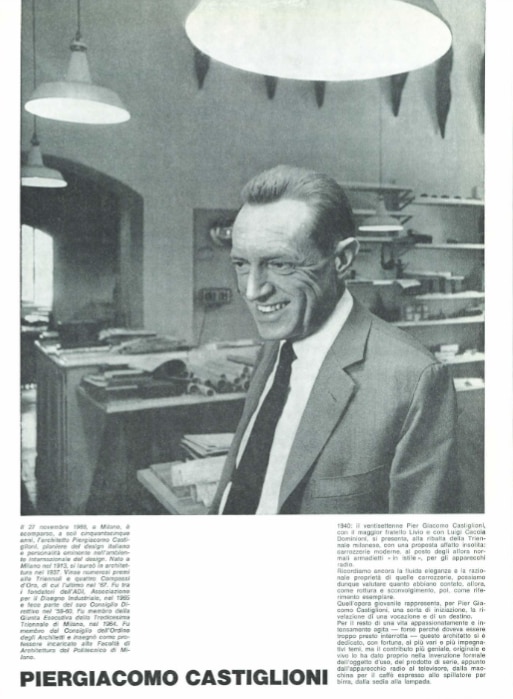
Castiglioni’s prolific design career extended beyond this to include numerous exhibition layouts and trade fair pavilions, notably at the Milan Triennale, the Milan Trade Fair, and Expo ‘61 in Turin. Among his impressive portfolio of temporary architecture, the RAI Pavilion at the XLIII Milan Trade Fair in 1965 stands out as particularly impressive. This structure is characterized by bold, constructivist forms and a suspended volume and is conceived as a series of telescopes pointed skywards. Castiglioni also created interior designs and furnishings for major design brands and their relative showrooms, including the Gavina and Flos stores on Corso Monforte in 1961 and 1968, respectively, as well as the Splügen Braü brewery on Corso Europa in 1961. The brewery featured specially designed furniture pieces, including an eponymous pendant lamp, with graphics by Max Huber. Castiglioni’s work was regularly featured in Domus magazine during the 1950s and 1960s, with the brewery being described as a space “other” than the city that surrounded it, a place that “creates for all guests a pleasant sensation of ‘being on a journey’, as in a train’s or a boat’s compartment (…). The presence of other people is a show” (Domus 380, July 1961). The Splügen Braü brewery, one of Castiglioni’s many lost works, was dismantled in the early 1980s and survives today only in precious sequences of photographs from that time.
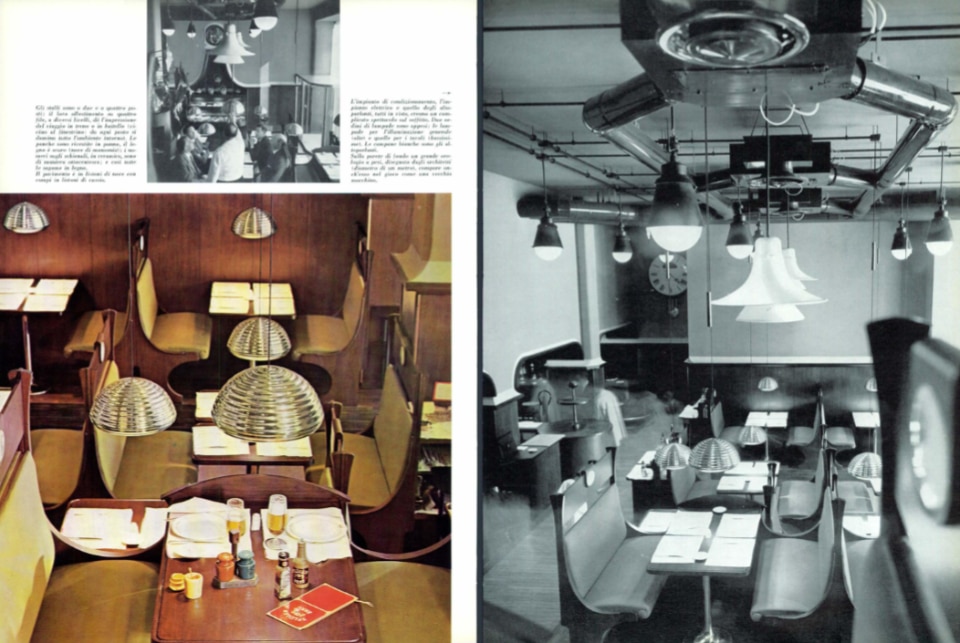
However, Castiglioni’s true impact on Italian design lies in his work as a product designer. His design philosophy, developed and shared with his brothers, particularly Achille, is best understood through his many iconic objects. During the transformative 1950s and beyond, as Italy embraced new ways of living and consuming, the Castiglioni brothers applied their pragmatic, synthetic, and ironic approach to designing or re-designing every element of the home. This very same pragmatic, synthetic, and ironic approach creates a subtle common thread that runs through their designs, whether they are strictly necessary objects like the legendary 1968 breaker switch, which is as useful as it is refined; essential and reinvented pieces such as the 1957 “Mezzadro” stool for Zanotta, which incorporates a tractor seat and rejects the traditional, comfortable bourgeois seat in an almost Dadaist fashion; or monumental presences like the iconic 1962 “Arco” lamp, with its elegant and outsized curved stem.
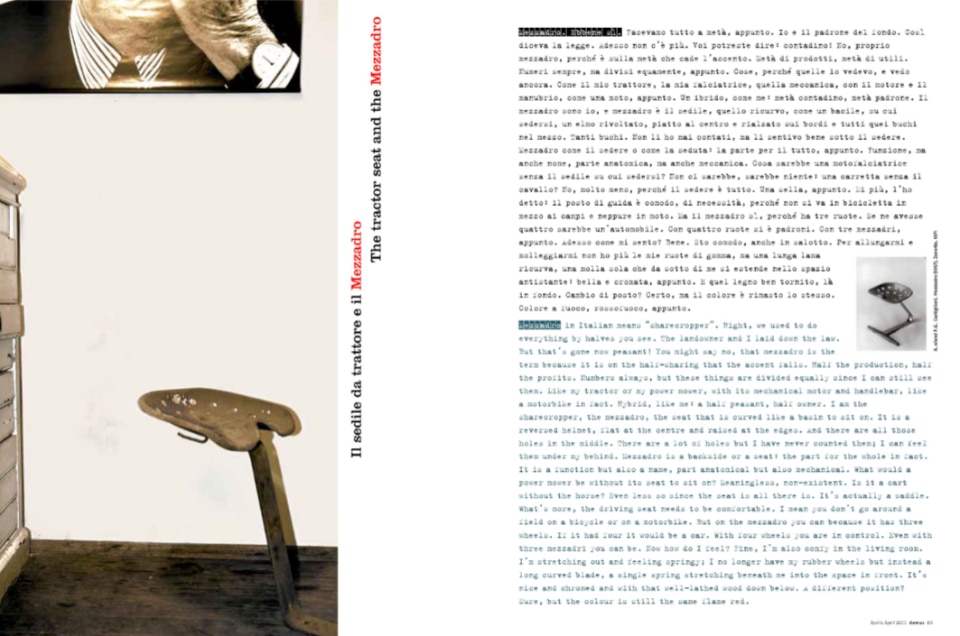
According to architectural historian Giuliana Ricci, “In the history of Italian design, Castiglioni and his brothers are the protagonists of that particular strand which, with very simple means and a clean design, tends to rediscover the fundamental reasons for the object in question. The combination of clarity, which unveils generally hidden elements, with the use of ‘poor’ materials and forms and a new and more functional distributive concept of the parts gives the final product an air of irony. This design procedure has often led artists to re-propose traditional models, albeit modified in form and more thoroughly resolved in terms of technical problems”. Castiglioni’s works have won many Compassi d’Oro awards, including five during Pier Giacomo’s active years in 1955, 1960, 1962, 1964, and 1967. These works were recognized by prestigious institutions such as the Milan Triennale and the Museum of Modern Art in New York, which have included them in their collections.
Above all, however, the objects designed by Pier Giacomo and his brothers became part, indeed an essential component, of an “ordinary” domestic landscape, that of “the homes of all Italians”. They constructed their modern aesthetics and suggested new ways of inhabiting them. At the time, in the second half of the twentieth century, they were revolutionary. Today, in a profoundly changed socio-economic and cultural context, they remain timeless icons of a critical and inventive approach that inspires even the best contemporary design.


